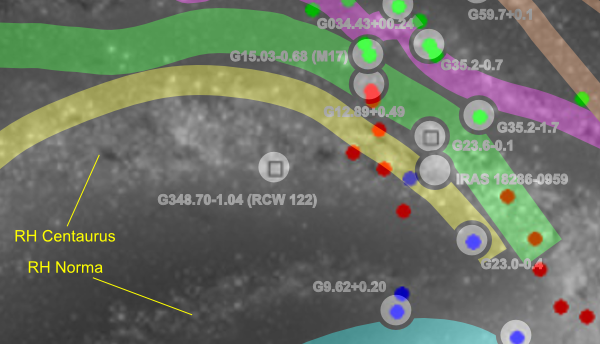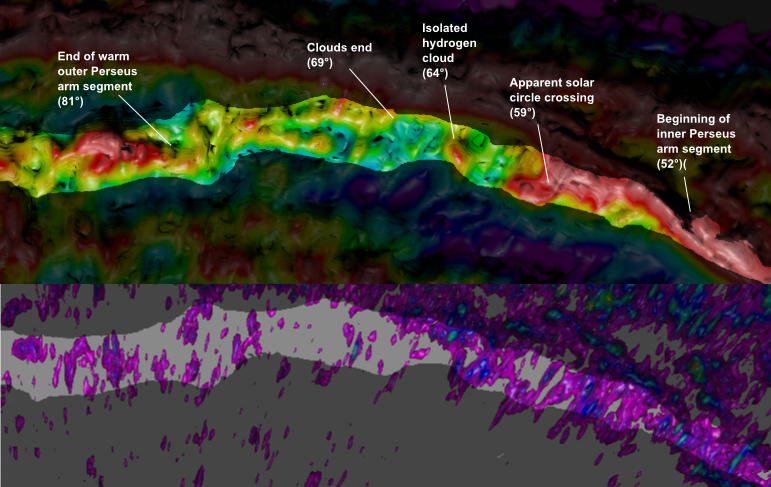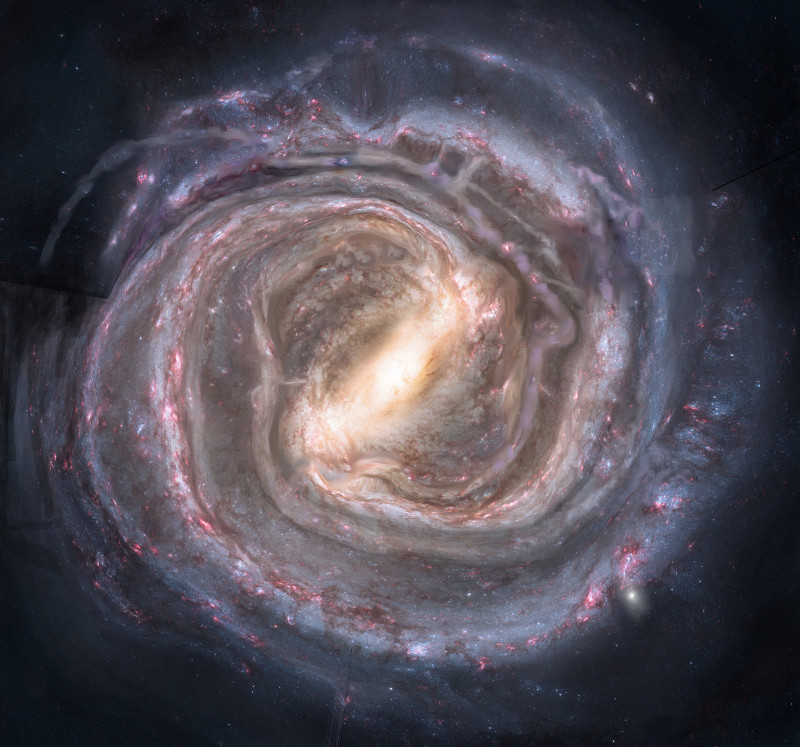This blog post is a continuation of the discussion started in New parallax estimates part 1: the inner galaxy, but this time for the Perseus arm in the outer galaxy. Please read the first blog post in this series for important background information.
The Perseus arm is highly visible in the velocity data for the second galactic quadrant.
There is some confusion / merging with the Norma arm between 90° and 102°, something I attribute to a structure called the Cygnet spur connecting the Perseus and Norma arms. However, after this point, the Perseus arm is clearly visible as a distinct structure of warm atomic hydrogen until it is compressed with the other velocity data in the anticentre (180°) direction. (Rotation models compress all velocity in the 0° and 180° directions to zero.)
The Perseus arm re-emerges from the anticentre compression in the third quadrant, although it is not quite as prominent as the local or Norma emission. However, after 217°, the velocity data shows complex changes to the Perseus arm structure and location.
You can see some of this complex structure in the image below.
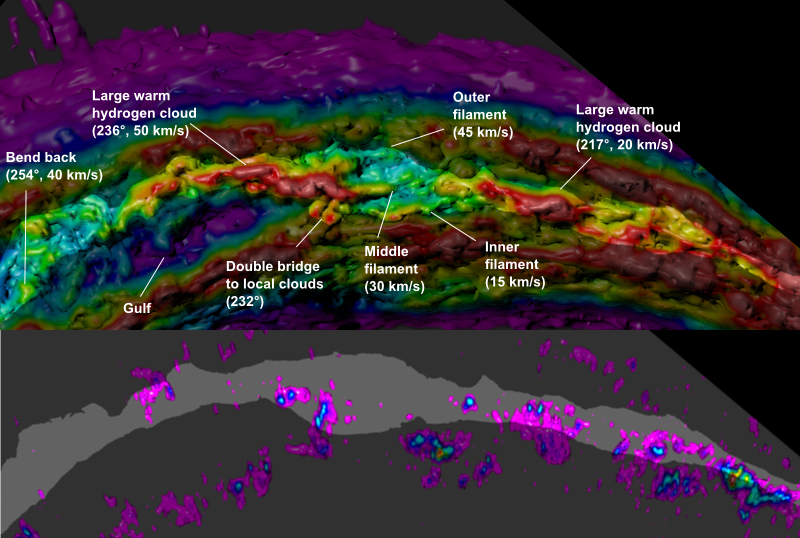
This image is taken from the Velocity Explorer, which represents velocity data from atomic and molecular surveys in polar coordinates.
The highlighted part at the top shows the atomic hydrogen velocity associated with the Perseus arm in this direction. The part at the bottom shows the same data for molecular clouds.
After the large cloud at 217°, the atomic hydrogen gas splits into three narrow filaments, with an outer filament bending toward the Norma arm and an inner filament bending towards the local emission. All three filaments are reunited by about 235° but then the entire arm appears to bend towards the outer galaxy.
There is an interesting double bridge of hydrogen clouds linking the Perseus arm with local emission around 232°. However, after this point an enormous empty gulf opens up between the Perseus arm and the local emission as the arm bends towards the outer galaxy.
This gulf, which contains only very cold hydrogen gas, is a distinctive feature of the third quadrant. There is no such gulf in the second quadrant. The region between the Perseus arm and more local emission in the second quadrant is crisscrossed by several warm bridges and even the interarm space between the Perseus arm and local emission is relatively warm in the second quadrant.
The third quadrant gulf can also be detected by the complete absence of molecular gas in this direction and velocity range. In fact, the Perseus arm appears to end as a continuous structure in molecular gas by about 222.5°, with only a few isolated molecular clouds visible after that point.
The structure of the Perseus arm is quite visible in the atomic hydrogen velocity data. Moreover, the data in this direction and velocity range is not affected by the compression and ambiguity of the velocity data in the inner galaxy and so is more likely to reflect real physical structures in the Perseus arm. I was therefore quite interested to see that the new parallax distance estimates include several locations in the third quadrant Perseus arm.
You can see these in the following image. The Perseus arm location used by my model is shown in red, Norma in yellow and the Orion spur / Vela molecular ridge in orange.
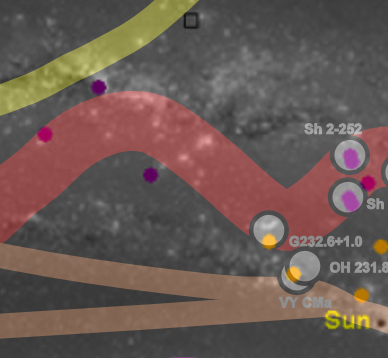
The white circles show the parallax distance estimates I used to derive my model. Where parallax-based distance estimates were not available (as in almost all of the third quadrant), I used a simple rotation model and atomic hydrogen velocity data as described here.
The coloured dots show the BeSSeL estimates. New estimates (not available when I created my model) are the coloured dots not surrounded by a white circle.
Although the Perseus arm location I used in my model is clearly an oversimplification of the complex structure revealed in the atomic hydrogen velocity data, I was interested to see that the new star formation region locations appear to be consistent with my model, and in particular, a significant bend in the Perseus arm towards the outer galaxy. Of course, currently I'm only working with an image from a preprint. I'm looking forward to seeing the actual parallax data and analysis when the appropriate BeSSeL paper is published.
Addition in July 2014: The BeSSel paper for the Perseus arm that contains the details for this data is now available on arXiv.




